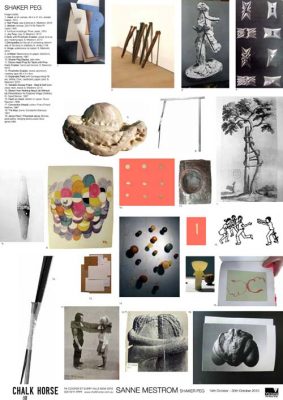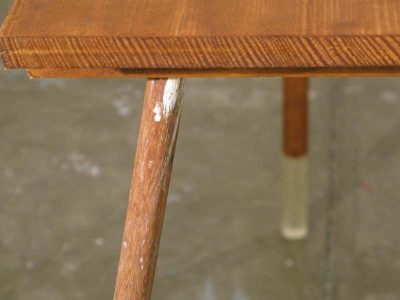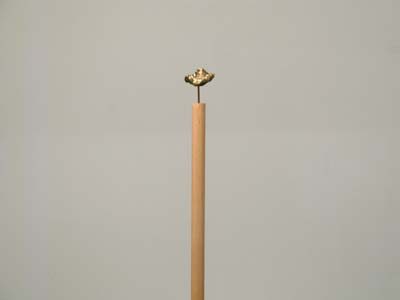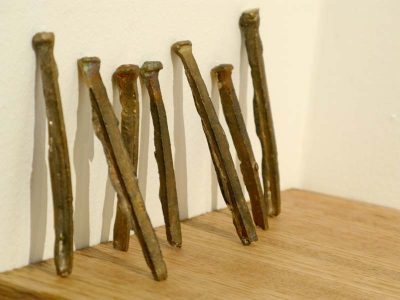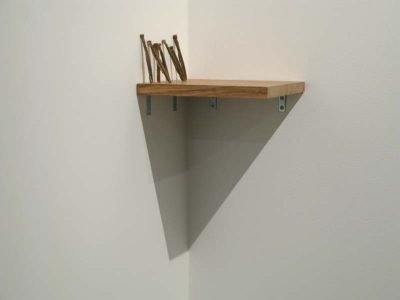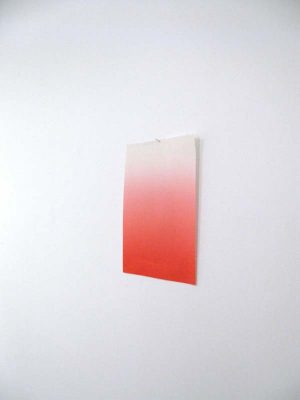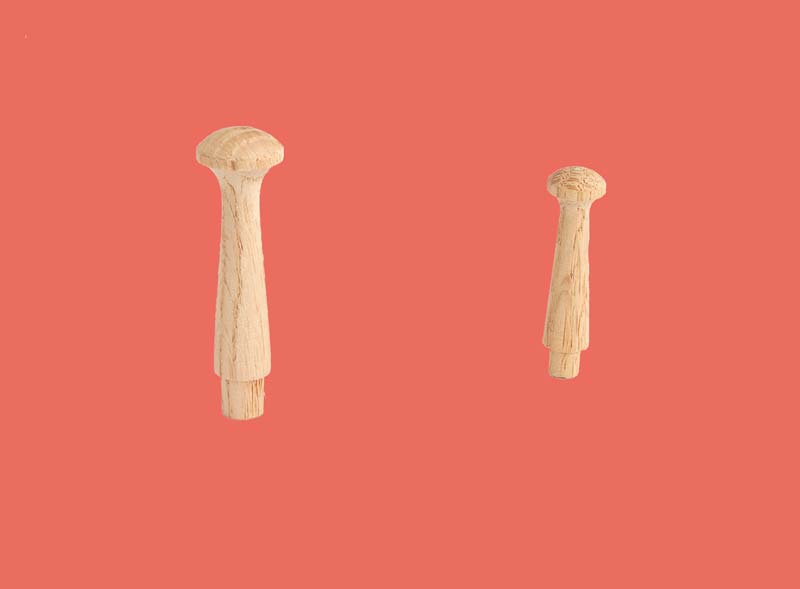Shaker Peg, Chalk Horse, Sydney 2010

Thinking Table (with bronze Elbow->Head Prop, wooden Prosthetic Enabler and resin Furniture Raisers); wood, bronze, resin and found broom stick
Clementine Blackman, exhibition essay
Shaker Peg, 2010 circulates around the Shaker, Quakers, Shaking Quakers or “Friends” an American religious sect whose core principals are social equity and a rejection of sexual relations. Interestingly the peg is not a peg that holds up garments or objects, but rather one that fills a void to hold things together. Quite a phallic notion really for a group of people who don’t go there.
According to Mestrom “They designed a lot of things, but its the peg that they’re most known for… [they] believe that idle hands are the devil’s playground.”
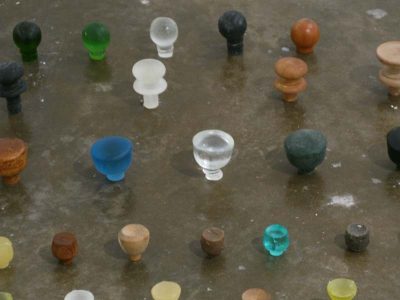
Variable Access Enablers (Hard & Soft); resin, wood
The exhibition reveals human intimacy with objects. A collection of some cast resin door handles as well as their ‘original’ wooden counterpart lay measured into a grid on the floor; the prophecy of these objects is that they invite the palm to cup and turn them opening forth new possibility.
The stagnation, sculptural recontextualisation and our own natural familiarity with handles lends the objects a new romantic indentity; they are our ticket to a hypothetical door somewhere, somehow that leads us to where we most want to go. In Mestrom’s mind the door handles would be taken home for $75 and integrated into the emotional landscape of the home; attached to a door, drawer or portal within the house and thereby transform the space beyond it to a new zone for contemplation.
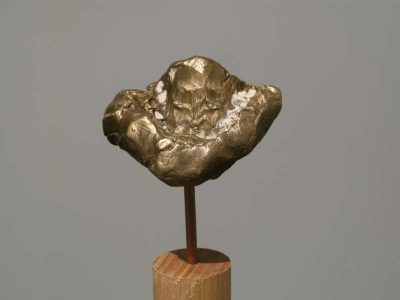
Joy Prop; bronze casting (the inside of a forced smile) + copper and wood; 150cm x 5cm x 5cm
Also in the exhibition is a bronze cast of a prosthesis to force the wearer into a smile. The terrific thing about this particular object is its incredibly effective application. Whilst it is a totally unwearable non-functional and aesthetic trophy, it is the communication of its intended function that delivers the desired result; you can’t help but smile when you’re told.
In the centre of the space is a seemingly cumbersome, mangled table composed of odd-looking detritus; the legs are extended and resolved with resin casts and a broom handle seems to be awkwardly lending itself at a crutch. The two indents in the centre of the table are echoic of human presence, as is the carved out enclave. Mestrom’s weird table starts to finally make sense when you insert yourself into the ergonomic philosophy behind it; positioned with your gut in the return of the table, elbows wedged into the bronze-cast crevices, hands cupping your forwards leaning chin. Suddenly all becomes patent- it’s a thinking table!
For Mestrom it is the intervention of the viewer that is the key to resolving the odd juxtapositions of form and components. Her connection to The Shakers she deems to be about their concept of manufacture being the pathway for connection to God: “Keeping their hands busy seems to bind them with a golden thread to God’s side. It’s really pretty simple: The Peg & God is not so dissimilar from the cup of tea & the Dali Lama, or Joseph Beuys & the Fat Corner.”
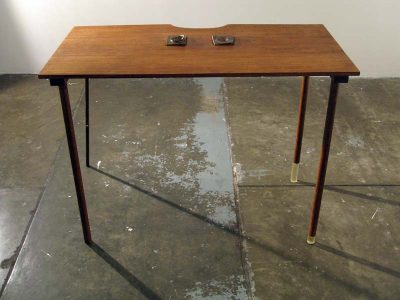
Thinking Table (with bronze Elbow->Head Prop, wooden Prosthetic Enabler and resin Furniture Raisers); wood, bronze, resin and found broom stick
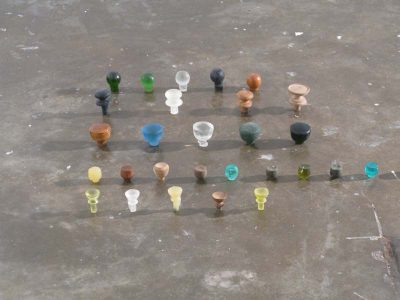
Variable Access Enablers (Hard & Soft); resin, wood

Gradient Piece; found office paper
